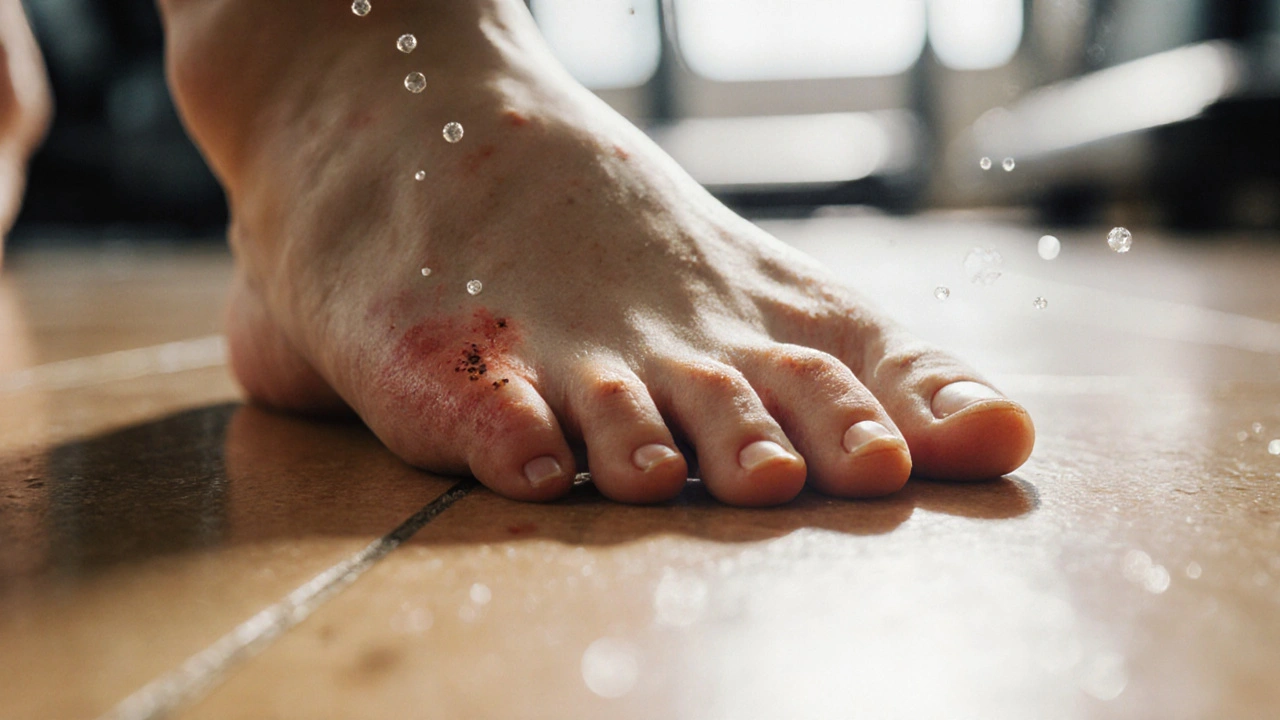Tinea Pedis: What It Is, How to Treat It & Prevent Recurrence
If you've ever felt an itchy, burning sensation between your toes or seen a scaly rash on the bottom of your foot, you’ve probably dealt with tinea pedis, more commonly called athlete's foot. It’s a fungal infection that thrives in warm, moist places – think sweaty shoes, public locker rooms, and damp socks. The good news? It’s easy to recognize and even easier to clear up with the right steps.
Most people notice the first sign as a red, itching patch on the skin. It may start as a small sore and then spread to the soles, sides, or between the toes. The skin can become flaky, develop tiny blisters, or turn white and macerated where it’s constantly wet. If you ignore these signs, the fungus can spread to toenails or even to other parts of the body.
When to See a Doctor
In many cases, over‑the‑counter creams will do the trick, but there are times you should get professional help. Look for these red flags: the rash isn’t improving after a week of self‑care, you have a fever, the infection spreads quickly, or you notice thickening or discoloration of the toenails. A doctor can prescribe stronger antifungal medication and rule out other skin problems.
Simple Home Remedies and OTC Treatments
Start by keeping your feet dry. After showering, pat them thoroughly with a towel and let them air‑dry for a few minutes before putting on socks. Choose moisture‑wicking socks made of cotton or wool, and change them if they get damp.
Apply an over‑the‑counter antifungal cream, spray, or powder that contains clotrimazole, terbinafine, or miconazole. Follow the directions – usually twice a day for two to four weeks, even if the symptoms disappear early. Consistency is key.
For a quick DIY boost, soak your feet in a solution of one part white vinegar to four parts warm water for 15 minutes daily. Vinegar’s acidity helps limit fungal growth. After soaking, dry your feet well and apply the antifungal cream.
If the infection is stubborn, an oral antifungal like terbinafine tablets may be required. This is a prescription option, so talk to your doctor before trying it.
Preventing a Repeat Attack
Prevention is mostly about staying dry and clean. Here are a few habits that work:
- Wear breathable shoes and avoid tight, non‑ventilated styles.
- Rotate shoes every day so they have time to dry out.
- Use antifungal powder inside shoes and on feet, especially if you sweat a lot.
- Never walk barefoot in public showers, pools, or locker rooms – wear flip‑flops.
- Wash socks in hot water (at least 60 °C) and dry them on a high‑heat setting.
For athletes or anyone who spends a lot of time on the field, consider a daily foot spray that contains tea tree oil or another natural antifungal. It adds an extra layer of protection without much effort.
In short, tinea pedis is a common, manageable problem. Spot the symptoms early, keep your feet dry, use an antifungal cream correctly, and follow simple hygiene habits. If things don’t improve, a quick visit to the doctor can get you back on track. Stay proactive and you’ll keep the itch and rash at bay for good.

Athlete's Foot: Causes, Symptoms & Effective Treatments
Learn what causes athlete's foot, how to spot symptoms, and the best treatment options-from OTC creams to prescription meds and prevention tips.
view more